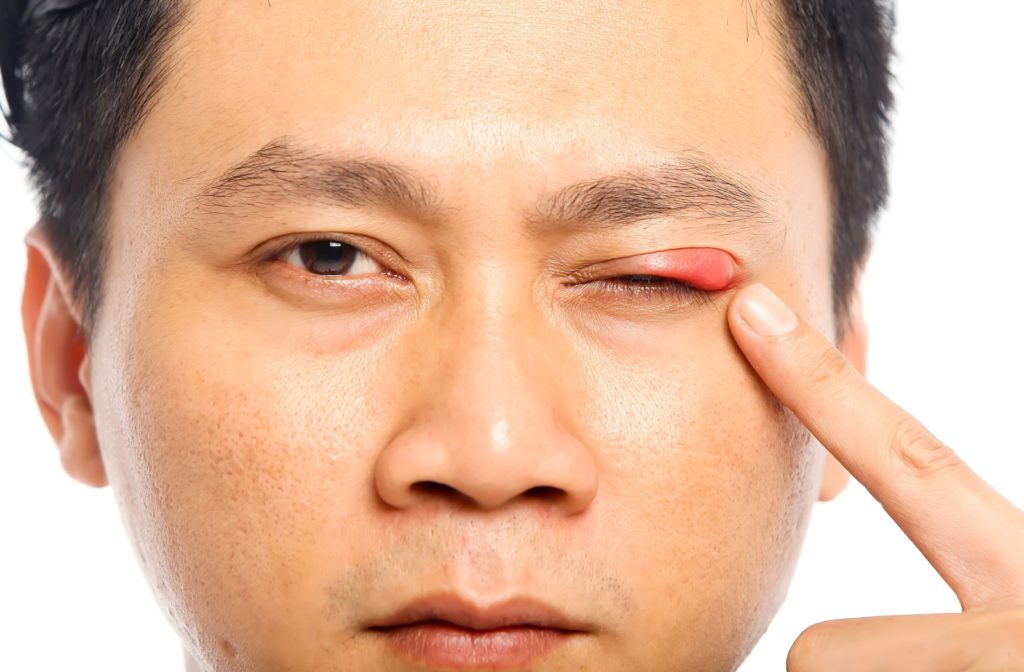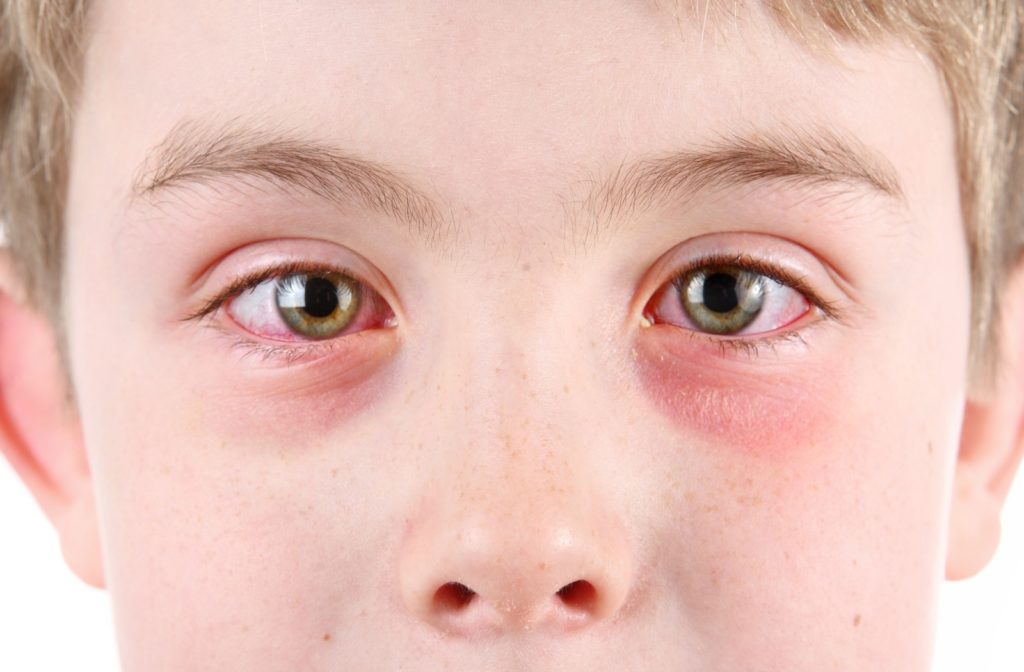If you or your child is facing off with conjunctivitis or a stye, you’re not alone! These are two common eye nuisances that can throw more than a bit of discomfort your way. However, they share many symptoms, which can make it difficult to tell them apart.
While both styes and conjunctivitis can cause redness and irritation, styes are recognizable by a noticeable red bump on the eyelid. If you’re still having trouble telling them apart, we can uncover the source of your discomfort with an eye exam. Once we know what’s going on, we can start working to bring you relief!
What is a Stye?
A stye is essentially a bacterial infection that leads to the formation of a small, painful lump on the eyelid. It’s often filled with pus and resembles a pimple.
Typically, styes develop in an eyelash follicle on the outer edge of the eyelid. These are called external styes. Internal styes begin in oil glands and can push against the eye, making them potentially much more uncomfortable.
Styes can be caused by:
- Sleeping in makeup
- Rubbing your eyes with unwashed hands
- Neglecting contact lens hygiene
- Overwearing contact lenses
- Using old or expired cosmetics
Additionally, allergies and a skin condition called rosacea can irritate the area around the eyes and cause people to rub, increasing their risk for infection.
Common Stye Symptoms
Stye symptoms include:
- Swelling
- Redness around the eyelid
- Pain and tenderness
- A sensation of having something in the eye
- Yellowish discharge
- Eyelid tenderness
- Sensitivity to light
- Grittiness
- Excessive eye watering
- Crust around the eyelid
What is Conjunctivitis?
Conjunctivitis, on the other hand, is an inflammation or infection of the outer membrane of the eyeball and the inner eyelid, called the conjunctiva. There are four general types of conjunctivitis:
- Viral conjunctivitis: Often accompanies a cold or respiratory infection.
- Bacterial conjunctivitis: Characterized by sticky, yellow, or greenish-yellow eye discharge.
- Allergic conjunctivitis: Triggered by allergens and accompanied by intense itching and seasonal allergies.
- Chemical conjunctivitis: Caused by irritants such as air pollution, chemicals, or chlorine
Common Conjunctivitis Symptoms
Symptoms can vary depending on the cause but include:
- Redness in the white of the eye
- Increased tear production
- Discharge from one or both eyes, which can be clear, white, yellow, or green
- Itchy, burning eyes
- Blurred vision
Spotting the Differences Between Stye vs. Conjunctivitis
While both conditions can seem very similar, there are some telltale signs to indicate which one is causing your discomfort. They can be hard to spot on your own, so if you’re ever in doubt, an optometrist can clear up the confusion.
Here are a few key differences you can watch for:
- A stye typically affects only one eyelid and presents as a swollen lump. Conjunctivitis affects the entire eye and can quickly spread to both eyes.
- Discharge from a stye, if present, is usually limited to the area around the lump, whereas conjunctivitis can cause discharge across the entire eye.
- Itching and widespread redness are more commonly associated with conjunctivitis.

How are Styes & Conjunctivitis Treated?
Treatment for a stye includes warm compresses several times a day to the affected eyelid. They often resolve on their own within a week. During this time, it’s vital you don’t accidentally pop it. This could spread the infection—so resist the urge to scratch! If the stye is particularly tenacious, your doctor may prescribe antibiotics to reduce inflammation and address the infection.
Treating conjunctivitis depends on the cause. A doctor can treat bacterial conjunctivitis with antibiotics. Viral conjunctivitis typically clears up on its own within a few days, but you have to be careful not to spread it. Both bacterial and viral pink eye are highly contagious!
You can usually prevent allergic and chemical conjunctivitis before they start by avoiding known allergens and irritants. If allergies are unavoidable, however, your doctor could recommend antihistamines to reduce symptoms.
Prevention is always better than a cure. With that in mind, here are some tips to avoid styes and pink eye alike:
- Make handwashing your best friend, especially when you’re around kids or pets
- Take eye makeup off every night, opting for an oil-free remover
- Wash your face with warm water before bed
- Keep your bedding, especially pillows, fresh by washing them regularly
- Sharing might be caring, but not when it comes to anything that touches your eyes. Keep your towels, washcloths, and makeup to yourself
When Should You See a Doctor?
If you encounter any of the following issues, it’s crucial to seek professional medical advice immediately:
- Severe pain that is unmanageable or disruptive
- Symptoms that persist for more than 48 hours without any sign of improvement
- The pus is yellow or green
- The infected person is younger than 5
- The whites of your eye change to something other than light red or pink
Early diagnosis and treatment are key to preventing complications that could worsen your condition and promoting a quicker recovery.
Protecting Your Family’s Eye Health
While styes and conjunctivitis share some common symptoms, their causes, treatments, and preventive measures differ greatly. By understanding these differences, you can take the right steps towards managing your symptoms and maintaining your eye health.
Remember, when in doubt, it’s always best to consult your optometrist. At Total Vision Del Mar, we can examine your symptoms and guide you on a proper treatment plan. So whether you’ve noticed a red bump on your eyelid or your kid’s eyes look rather pink, don’t hesitate to book an appointment. We’re here to help!



